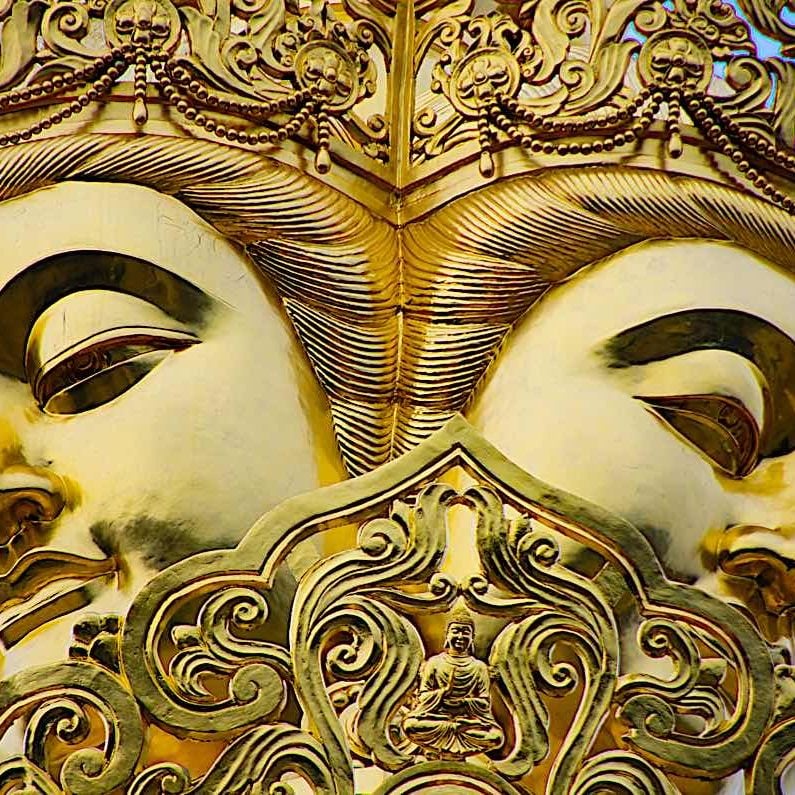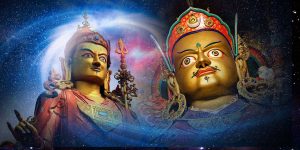“Is there any consciousness that is constant, lasting, eternal… that will stay just as it is as long as eternity”… Nakhasikha Sutta The Tip of the Fingernail
“No, monk, there is no form… no feeling… no perception… there are no fabrications… there is no consciousness that is constant, lasting, eternal, not subject to change, that will stay just as it is as long as eternity.” — the Buddha
Nakhasikha Sutta
The Tip of the Fingernail
Translated from the Pali by Thanissaro Bhikkhu.
At Savatthi. Sitting to one side, a monk said to the Blessed One, “Lord, is there any form that is constant, lasting, eternal, not subject to change, that will stay just as it is as long as eternity? Is there any feeling… any perception… Are there any fabrications… Is there any consciousness that is constant, lasting, eternal, not subject to change, that will stay just as it is as long as eternity?”
“No, monk, there is no form… no feeling… no perception… there are no fabrications… there is no consciousness that is constant, lasting, eternal, not subject to change, that will stay just as it is as long as eternity.”
Then the Blessed One, picking up a tiny bit of dust with the tip of his fingernail, said to the monk, “There isn’t even this much form that is constant, lasting, eternal, not subject to change, that will stay just as it is as long as eternity. If there were even this much form that was constant, lasting, eternal, not subject to change, that would stay just as it is as long as eternity, then this living of the holy life for the right ending of suffering & stress would not be discerned. But because there isn’t even this much form that is constant, lasting, eternal, not subject to change, that will stay just as it is as long as eternity, this living of the holy life for the right ending of suffering & stress is discerned.
“There isn’t even this much feeling…
“There isn’t even this much perception…
“There aren’t even this many fabrications…
“There isn’t even this much consciousness that is constant, lasting, eternal, not subject to change, that will stay just as it is as long as eternity. If there were even this much consciousness that was constant, lasting, eternal, not subject to change, that would stay just as it is as long as eternity, then this living of the holy life for the right ending of suffering & stress would not be discerned. But because there isn’t even this much consciousness that is constant, lasting, eternal, not subject to change, that will stay just as it is as long as eternity, this living of the holy life for the right ending of suffering & stress is discerned.
“What do you think, monk — Is form constant or inconstant?” “Inconstant, lord.” “And is that which is inconstant easeful or stressful?” “Stressful, lord.” “And is it fitting to regard what is inconstant, stressful, subject to change as: ‘This is mine. This is my self. This is what I am’?”
“No, lord.”
“… Is feeling constant or inconstant?”
“Inconstant, lord.”…
“… Is perception constant or inconstant?”
“Inconstant, lord.”…
“… Are fabrications constant or inconstant?”
“Inconstant, lord.”…
“What do you think, monk — Is consciousness constant or inconstant?”
“Inconstant, lord.”
“And is that which is inconstant easeful or stressful?”
“Stressful, lord.”
“And is it fitting to regard what is inconstant, stressful, subject to change as: ‘This is mine. This is my self. This is what I am’?”
“No, lord.”
“Thus, monk, any form whatsoever that is past, future, or present; internal or external; blatant or subtle; common or sublime; far or near: every form is to be seen as it actually is with right discernment as: ‘This is not mine. This is not my self. This is not what I am.’
“Any feeling whatsoever…
“Any perception whatsoever…
“Any fabrications whatsoever…
“Any consciousness whatsoever that is past, future, or present; internal or external; blatant or subtle; common or sublime; far or near: every consciousness is to be seen as it actually is with right discernment as: ‘This is not mine. This is not my self. This is not what I am.’
“Seeing thus, the instructed disciple of the noble ones grows disenchanted with form, disenchanted with feeling, disenchanted with perception, disenchanted with fabrications, disenchanted with consciousness. Disenchanted, he becomes dispassionate. Through dispassion, he is fully released. With full release, there is the knowledge, ‘Fully released.’ He discerns that ‘Birth is ended, the holy life fulfilled, the task done. There is nothing further for this world.'”
More articles by this author

Protection from all Harm, Natural Disaster, Weather, Spirits, Evil, Ghosts, Demons, Obstacles: Golden Light Sutra: Chapter 14

Samantabhadra’s The King of Prayers is the ultimate Buddhist practice how-to and itself a complete practice

The Five Strengths and Powers or pañcabalā in Buddhism — the qualities conducive to Enlightenment: faith, energy, mindfulness, concentration and wisdom
Search
Latest Features
Please support the "Spread the Dharma" mission as one of our heroic Dharma Supporting Members, or with a one-time donation.
Please Help Support the “Spread the Dharma” Mission!

Be a part of the noble mission as a supporting member or a patron, or a volunteer contributor of content.
The power of Dharma to help sentient beings, in part, lies in ensuring access to Buddha’s precious Dharma — the mission of Buddha Weekly. We can’t do it without you!
A non-profit association since 2007, Buddha Weekly published many feature articles, videos, and, podcasts. Please consider supporting the mission to preserve and “Spread the Dharma." Your support as either a patron or a supporting member helps defray the high costs of producing quality Dharma content. Thank you! Learn more here, or become one of our super karma heroes on Patreon.
Lee Kane
Author | Buddha Weekly
Lee Kane is the editor of Buddha Weekly, since 2007. His main focuses as a writer are mindfulness techniques, meditation, Dharma and Sutra commentaries, Buddhist practices, international perspectives and traditions, Vajrayana, Mahayana, Zen. He also covers various events.
Lee also contributes as a writer to various other online magazines and blogs.















